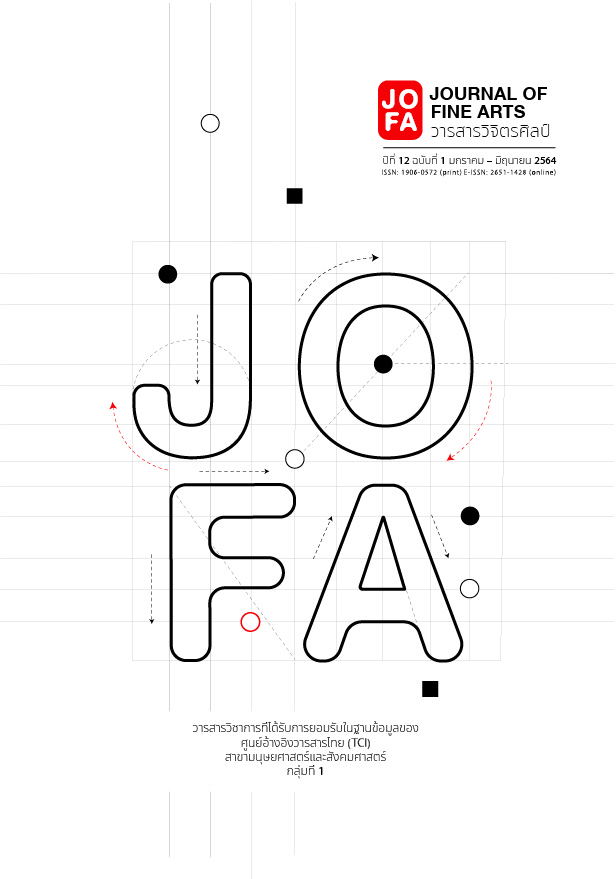The Aesthetics Analysis of Thai Short Film, Animation
Main Article Content
Abstract
The objectives of this research are 1) to study the major characteristics of Thai short animations through the textual and contextual analysis; 2) to analyze the aesthetics that is presented through images, voices and narratives of Thai short animations; 3) to synthesize the ways to develop and present aesthetics in Thai animations; and 4) to create an animation that represents the common identities of Thai animations.
In this research, many approaches and theories have been applied to design the tools for the analysis of the aesthetics appeared in 30 high-quality Thai short animations which are selected through the purposive sampling technique. The findings from the study reveal the following significant features. 1) A short Thai animation should not be shorter than 6 minutes as it is considered sufficient length to introduce the characters. 2) The conflict mostly found in common Thai animations is occurred between a character and the need within. 3) All of the studied animations have the predetermined characteristics of ideal goodness which is rooted in the values, norms and ethics in Thai society. 4) The aesthetics portrayed in the Thai short animations involves creating the animations that reflect beauty of mind or to be a good person regarding traditional Thai ethical systems, such as, to pay respect to senior people, to prioritize public benefits, to be self-satisfied with what one has and to avoid violation of religious codes. All of these features aim to encourage the audiences to be aware of Thai virtue.
The findings from the theoretical study lead to the model concept for producing an animation entitled “Good People” that reflects the virtue and vice in the context of contemporary Thai society. From a national individual exhibition and an international group exhibition, “Good People” has been evaluated at excellent level. Therefore, this animation interestingly represents the common identities of Thai animations.
Article Details
References
Barsam, R. Looking at Movies: An Introduction to Film. New York: Norton & Company, 2007.
Buchan, S. Animating Film Theory, Animation. London: Duke University, 2014.
Catmull, E. Creativity Inc. New York: Random House, 2014.
Fudet, P. Kānphatthanā Phāpphayon Kātūn Thai Thāngthō rathat sū khwāmpen sākon. [The Development of Thai Animation Cartoon Movies to International Standards]. Bangkok: Thammasart University, 2005.
Hick, D. Introducing Aesthetics and the Philosophy of Art. New York: Continuum International Publishing, 2012.
Khunarak, N. Kān Wikhro̜ Læ Wičhān Phāpphayon ʻǣ Ni Mē Chan. [Animation Analysis and Critacal]. Khonkhaen: Khonkhaen University, 2008.
Rosing, L. Pixar with Lacan: The hysteric’s guide to animation. London: Bloomsbury, 2016.
Somsaman, N. Idesign Magazine 130. (August/September 2013), Bangkok: Thammachart, 2013.
Thaweesak, S. Čhāk Phutsāsanā Hǣng Rat Sū Phutsāsanā Thī Pen ʻitsara čhāk Rat. [The development of Thai animated television movies to be international standards]. Bangkok: Siamparitut, 2017.
Thongbai, N. Chīk Khō̜bon ʻǣnimēchan ʻēkkalak Khō̜ng hāi ʻo Miyāsāki nak fan hǣng Tawanʻō̜k. [Tearing on the miscellaneous monuments of the eastern national dreamer Hayao Miyazaki]. Khonkhaen: Khonkhaen University, 2007.
Warburton, N. A Little History of Philosophy. Bangkok: Se-Education, 2018.


